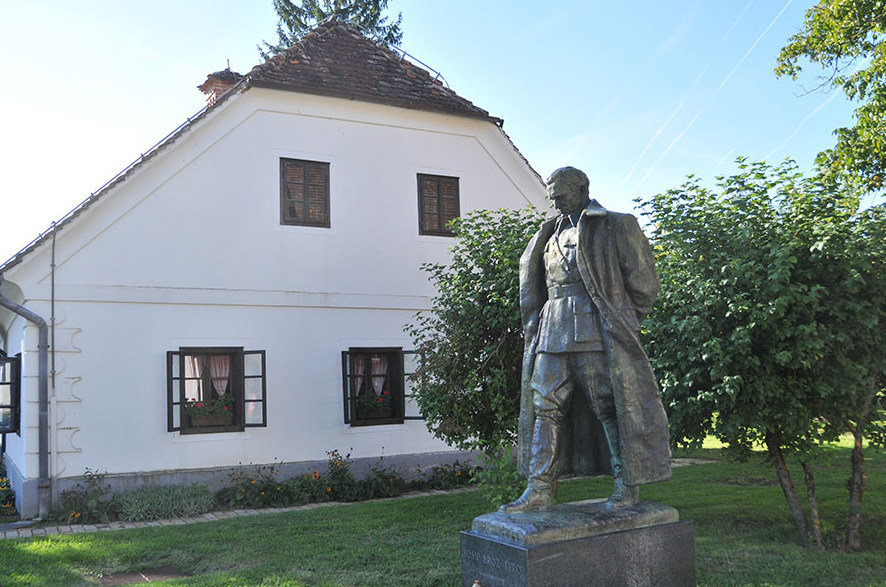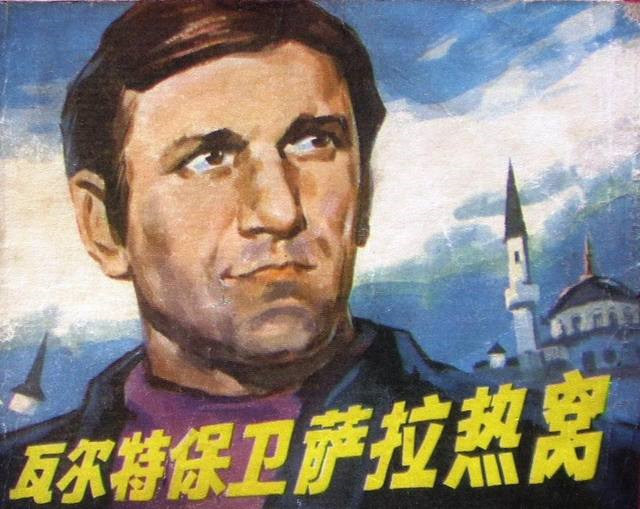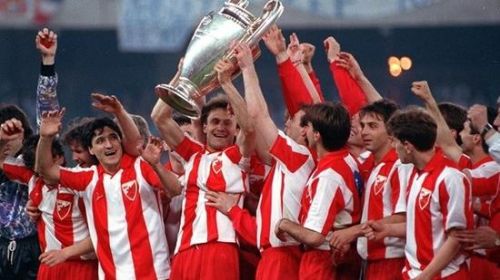Serbia in Chinese Memory
Cctv news(Reporter Li Shaofei) Because of the state visit of the Supreme Leader of president, China, the reports on Serbia have suddenly warmed up.
But in fact, in China, most people know little about Serbia. Talking about this country with the "key to the Balkans", Chinese people are still more impressed by the "Yugoslavia" era, which has become a historical term.
In that distant but unforgettable memory, there are Tito, the leader who never bowed to power, Walter, the elusive guerrilla hero, the passionate Yugoslav football, and the vicissitudes and beautiful ancient city Belgrade … …
Man of iron "Tito"

Tito statue (photo by Xue Qun) Image source: Xinhua International
There is no doubt that Tito is the totem of modern Yugoslavia. In the special era of the two world wars, in the face of the invasion of fascism, Tito, as commander-in-chief of the People’s Army, United the divided Balkan Peninsula into a powerful whole with his super personal charm, and Yugoslavia, which was formed by the union of six republics including Serbia and Croatia, twisted into a rope and fought bravely against the invaders.
Tito’s legend goes beyond that. After World War II, unlike most socialist countries, Yugoslavia under his administration deliberately kept a distance from the Soviet Union and insisted on independence and non-alignment movement. Yugoslavia is the only socialist country in Europe that has not joined the Warsaw Pact, openly challenging Big Brother.
After successive assassinations, Tito said strongly in his letter to Stalin: Don’t send someone to kill me. We have arrested 500 people, some with bombs and some with guns … … If you still send someone to kill me, then I will send someone to Moscow, and I will definitely not send the second one.
In 1974, 82-year-old Tito became the lifelong president of Yugoslavia. In 1977, the communist party revolutionary was invited to visit China. Tito, who insisted on independence and was not afraid of power all his life, was warmly sought after in China.
In 1980, Yugoslavia’s "God-given leader" died of illness. Twelve years after Tito’s death, the Socialist Federal Republic of Yugoslavia, which was founded by this great leader, was dissolved.
Guerrilla hero "Walter"

Walter Defends Sarajevo has influenced a generation in China, and Walter’s image is deeply rooted in people’s hearts. Image source: Xinhuanet
If Tito is a realistic hero of Yugoslavia, then Walter is a superman on the screen.
Walter is from the classic Yugoslav film Walter Defends Sarajevo. In the 1980s, this film was introduced into China and gained a large number of fans.
Walter, the hero, is brave and witty, and the heroic image of leading guerrillas to fight against German Nazi aggression is deeply rooted in the hearts of Chinese people. Walter has also become synonymous with Yugoslav nationals, so that today, more than 40 years later, the death of Bata Zivojinovic, the leading actor in the film, still arouses a flood of nostalgia in China, which shows the influence of Walter in China.
This reflects the popularity of Yugoslav films in China in those years. Apart from Walter Defending Sarajevo, films and TV works such as The Bridge and The Blacklist are also popular in China. It can be said that in the 1970s and 1980s, Yugoslav films were as popular in China as domestic audiences loved Hollywood blockbusters.
The Golden Age of Yugoslav Football

Red Star Belgrade, which won the Champions League in 1991
Football is another indelible impression of Yugoslavia. In the second half of the last century, Yugoslav football, with both European body and American skills, was at its peak.
In the first World Cup after World War II, Yugoslavia finished fifth, and in the 1962 World Cup, they reached the semi-finals. The record of the European Cup is even more brilliant. In 1960 and 1968, Yugoslavia won the runner-up twice.
After entering the 1980s and 1990s, Yugoslav football reached its peak. The domestic league champion Red Star Belgrade won the Champions League in 1990-91 and the Toyota Cup in 1991, and a number of talented players such as Suk, Bo Ban, savicevic and Pan Caifu were born. At that time, European giants such as Real Madrid, Barcelona and AC Milan often had Yugoslav players.
However, in a longer period of time, Yugoslav football is playing a sad role. Although there are many talented people, due to internal consumption and disputes, Yugoslav football at the national team level has never won the championship.
In 1992, the Yugoslav team, which was at its peak and had a high voice to win the championship, had to quit because of the civil war, resulting in a romantic "Danish fairy tale", which replaced Yugoslavia and won the championship in one fell swoop.
After the dissolution of the Yugoslav Federation, that beautiful and sad golden age also went with it. However, the glory and beauty of the past are still amazing from time to time. The words of former Bosnia and Herzegovina coach Susic are the epitome of this complex: "If it weren’t for the war, Yugoslavia might win the World Cup one day. I know that thinking like this has long been useless, but sometimes you still dream that all this can happen. "
The city called Belgrade.

Belgrade
As the former capital of the Federal Republic of Yugoslavia and now the capital of Serbia, Belgrade, together with Havana in Cuba and Tirana in Albania, has been regarded as the three bright lights of socialism for a long time, and Chinese people have special feelings for this historic city.
But sadly, due to fierce and frequent wars, this beautiful city has experienced hardships and scars. During World War II alone, it was bombed twice: in 1941, the attack by German troops paralyzed all the public service systems in this city, and the destroyed buildings included the National Library and most government agencies. At the end of the war in 1944, British and American planes bombed Beicheng under the Nazi occupation of Germany for another half year. After the end of World War II, more than one third of the houses in this city were in ruins. In 1999, this modern city was attacked by NATO again.
After entering the new century, this ancient city finally ushered in a relatively quiet period, and Belgrade was able to regain its glory. Today, beautiful sava river passes through the urban area, dividing Belgrade into two parts, an antique old city on one side and a new city with modern buildings on the other.
People can easily stroll in the Mikhail Square in the center of the city, or walk in the artistic old street of Scatania. You can also climb the ancient castle in Kalemegdan Park and look out. Here, the clear sava river pours into the long Danube, and the whole city has a panoramic view.
On 17th, it will welcome the distinguished guests from China and continue to write the friendship story between two legendary countries.